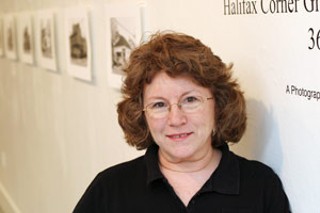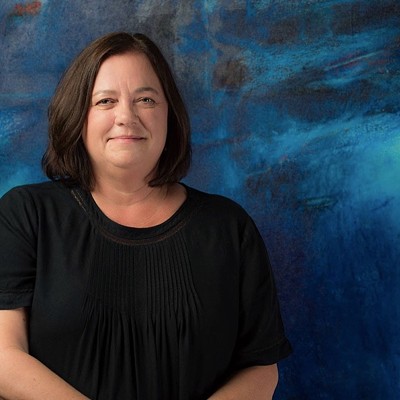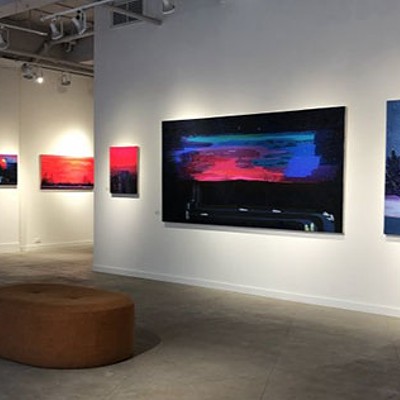Halifax photographer Suzi Cameron presents work that recasts familiar locations around this city. In her exhibition, 36 Halifax Corner Grocery Stores 36 Years Later, on now through Saturday at the Anna Leonowens Gallery, she reacquaints her viewers with sites they likely take for granted.
"They're part of my sense of what a neighbourhood is," says Cameron, who grew up in Summerside, PEI, and visited an aunt and uncle who owned a rural corner storein Malpeque.
"It was groceries, it was meat; they had an egg-grading station. They sold Irving gasoline. They sold paint, nails and the ice-house still existed. They didn't have ice, but as kids we used to crawl in and play inthe sawdust."
Corner stores and the type of neighbourhood they represent---closely quartered, tightly knit---are disappearing, the artist says. To document the change, Cameron arranges her show in three segments, drawing together work spanning a few decades.
First, there's a series of pairs: five-by-seven-inch, black-and-white images of 36 Halifax stores taken 36 years ago; a 1972 project by photographer Lionel Simmons and then-Leonowens director Allan Harding MacKay. Alongside those, there are colour versions of the same businesses taken by Cameron with a 35mm analog camera in 2000.
When Cameron discovered the original work, she realized the extent to which these businesses proliferated and thrived. "Some of them were just diagonally across from each other. My take on that is that children weren't allowed to cross the street. So it worked in the store owner's favour to be on a certain block because of that. Or families usually only had one car---if they had a
car---and then the mom would take all the kids with her when she went to the corner store, or she would send one of them."
In the second part of her show, Cameron groups her own shots of the nine surviving stores (of the original 36) in a series of 12-by-16-inch, black-and-white prints; pictures she took using a medium-format camera earlier this year.
The return to black and white expresses both the artist's concern for the businesses' future and it also allowed her to remove "some of the distracting information, especially the graffiti."
"The buildings are showing their age this year," says Cameron. "They seem to have been targetted by a lot of graffiti. Graffiti in still photographs, I think, makes more of an impression than when you're just driving by...it didn't show them in the best light."
The final segment is a video she made in 2004. "Suzi moves the camera from the storefront into a 360-degree panorama of the location of the store. The camera changes its position, pointing outward and giving us a glimpse of the neighbourhood it serves," explains gallery director Tonia DiRisio.
The video focuses on the intersections where these stores often are found, such as Quinpool and Quinn or Jubilee and Preston, and the intersections of lives they foster.
Even when looking at the still images, Cameron says she urges people to contemplate the interiors.
"When we use the term 'corner store' we're thinking more, at least for me, we are, the interior and the social activity that goes on there, even more than we think about the building itself," says Cameron, who will use an upcoming scholarship from the Centre for Art Tapes "to move into the stores." But right now, what she wants to show are the exteriors, as they say plenty.
"The viewer can notice many changes from decoration to renovation as well as elimination," DiRisio says, adding that both advocacy and nostalgia are at work.
Indeed, the artist mentions how corner stores opened their doors during Hurricane Juan's aftermath, while grocery stores remained closed; how people eagerly shared stories of their favourite shop when they learned of her project.
Cameron encourages people to rethink the role of their local grocery chain store, set far back behind oceanic parking lots.
"I think when we hear about a lot of the bigger stores extending their hours a lot of us think, 'Oh good, that'll be convenient for me.' But we don't think, 'Well, what if we couldn't get there by car?' How convenient is that?"
36 Halifax Corner Grocery Stores 36 Years Later until Saturday, June 7 at Anna Leonowens Gallery, 1891 Granville, free.













